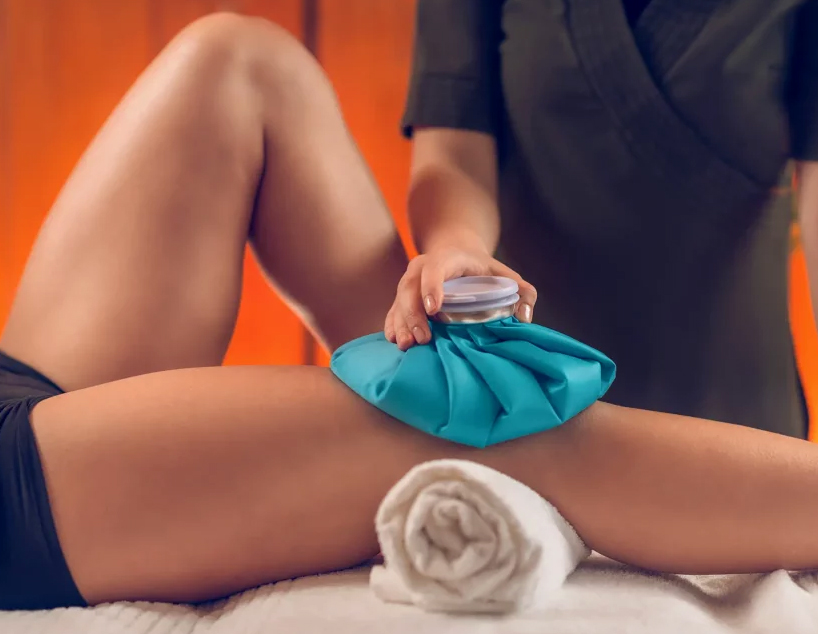From rheumatic joint pains to muscle strains and herniated discs that affect the musculoskeletal system, hot or cold applications are used to alleviate almost any condition. Hot and cold applications can be performed in physiotherapy units or can often be self-administered at home. The main advantage of these treatments is that they provide pain relief, muscle relaxation, and reduce swelling without the need for medication and at an affordable cost. So, when should hot or cold therapy be preferred, and what are the precautions to be taken while performing these treatments?
As a general rule, cold application is used for sudden (acute) injuries and pain treatment. In acute injuries, inflammation (activation of the immune system) and swelling are more pronounced. Cold application reduces this. Heat application is generally preferred for long-term (chronic) problems. Heat treatments reduce muscle pain and spasms. Sometimes, both hot and cold applications can be used alternately or at the same time for different body parts in the same person.

a) Pain Reduction: Nerve fibers are affected by cold application. The conduction velocity of all nerves, especially small myelinated pain fibers, slows down. Production of acetylcholine, which regulates nerve conduction velocity, can be reduced with cooling below 20°C. This produces an analgesic effect
Although there may be an increase in pain in the first 5-60 seconds of cold application, pain is reduced with a tingling and numbness sensation. Pain reduction within 12-20 minutes with cold application during the rehabilitation period creates an opportunity for exercise. Pain reduction with cold application reduces the need for NSAID drugs for athletes.
b) Swelling Reduction: Localized increase in blood volume due to vessel dilation or vessel rupture appears as regional swelling.
The sympathetic reflex provided by cold application allows for control of bleeding by causing contraction of the smooth muscle in the vessel wall (vasoconstriction). Thus, blood circulation in the injured area slows down.
Cold application performed when capillary vessels rupture and bleed reduces subcutaneous bleeding by lowering intravascular pressure. Thus, the lymphatic system is supported by reducing the workload of cleaning blood in tissue cavities. Swelling subsides more quickly.
In sports injuries, cold application is also an effective method for preventing and eliminating "reactive edema" that can occur during rehabilitation exercises or low-intensity training after the acute phase.
c) Reduction of Muscle Spasms: Tension in muscles occurs with protective reflexes during injuries. Developing muscle spasms lead to problems such as pain and circulatory disorders. Therefore, it is necessary to eliminate the spasms.
Reducing muscle temperature to below 27°C with cold application prevents maximal grip strength and high-intensity muscle contraction. Reducing muscle temperature reduces the elasticity of connective tissue and the fluidity of intra-articular fluid. A general "tissue rigidity" occurs with cold, but painful muscle spasms are relieved.
d)Reduction of Metabolic Activity: The most important effect of cold application is the reduction of metabolic activity. Reduction of vital needs at the cellular level and the decrease in tissue consumption with less food and oxygen reduce the amount of damaged tissue that needs to be repaired, while also enabling living cells to survive (on the edge).
Cold application cannot prevent the development of the inflammatory response at the cellular level, but it can be controlled by slowing it down.
1st phase; within 0-3 minutes: A discomforting sensation of cold is felt.
2nd stage; within 2-7 minutes: Burning, warming sensation, followed by pain and ache occur.
3rd stage; within 5-12 minutes: Numbness begins with tingling.
4th stage; within 12-15 minutes: Dilation of vessels in deep tissues occurs without an increase in cellular activity.
Except for short-term ice massage in cold therapies, cold material is not directly applied to the skin. A wet cloth, towel, or similar material must be placed between the skin and the cold material. Otherwise, the application may be uncomfortable.

In addition to superficial heating treatments performed in dry or moist environments, special devices are used in physical therapy for heating deep tissues. Ultrasound, short wave diathermy (a method of heating body tissues with electric current), and microwave diathermy are some of the methods used for deep heating.
Heat therapy causes vasodilation, which leads to increased blood flow. This allows more oxygen and nutrients to reach the tissue. Waste products are also eliminated more quickly with increased circulation. The transmission of pain signals to the brain is reduced by the transmission of hot sensations through nerve fibers. Heat therapy is beneficial for reducing stiffness in connective tissue and resolving tissue adhesions. Muscle spasms are relieved by warming, pain is reduced, and joint range of motion is increased.
Heat therapy can be applied to a small area, locally, or in a way that will affect the entire body. For local complaints such as muscle stiffness, applying heat to the affected area is sufficient. Regional treatments can be performed for larger areas of pain and stiffness. A warm moist towel or large hot pack can be used for this purpose. Treatments that warm the entire body, such as hot springs and saunas, are preferred for widespread joint calcification.
Stretching and warm-up exercises are also a good method to warm up the body and muscles if there is no condition preventing exercise.
If there is bruising or swelling in the affected area, heat therapy may not be appropriate. In this case, cold is more beneficial. Heat therapy is not applied to open wounds.
While cold therapy should be applied for a limited time, heat therapy can be applied for longer periods. Mild muscle tension can be relieved with 15-20 minutes of heat therapy. More severe pain and stiffness may require long-term application ranging from 30 minutes to 2 hours. Hot packs should always be wrapped in a towel to prevent skin burns.
Source: www.sprint-sporakademisi.com/spor-sahalarinda-ilkyardim-ve-ontedavi-yontemleri/